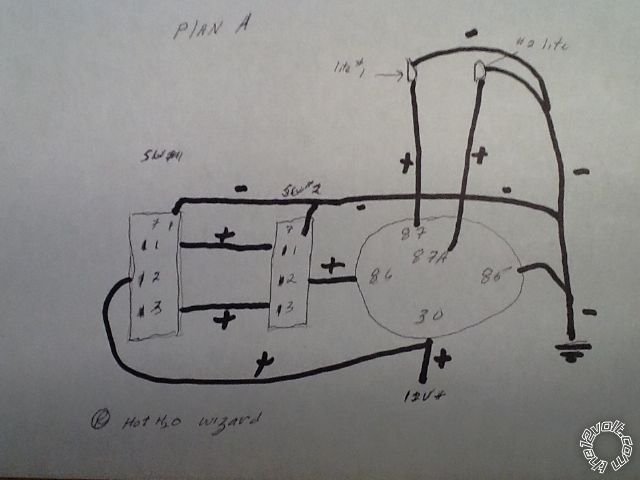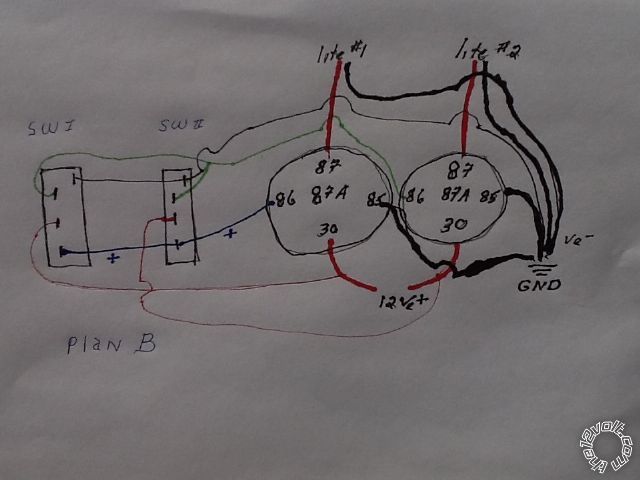LOL - I thought Howard was talking about ebbtide's reply (which had the all useful background info), and ebbtide was talking about Sydney (Orstralia)... or is ebbtide working thru a proxy or - often like me - using a decoy location?
I'm in Melbourne and we're having a nice mild 33C today, but no major fires that I am aware of.
Howard's suggestion is the type of elegant answer I thought of once I read your (ebbtide's) reason for the wiring. In fact I'd probably consider an optional extra for loud or irritating people - a loudness else remote triggered zapper eg, a 50-cal or maybe rail gun.
My only concern is the drain that such detectors may cause. And railguns are hard on batteries - but unlike 50-cals are silent so you won't disturb others. Others are concerned about the legalities of blowing away inconsiderate people, and they have every right to express those concerns. I however would only be concerned about blowing away minors or people from cultures where loudness etc is considered to be a compliment.
Luckily power conservation and batteries is something I am quite familiar with. And being a local invention, so too rail guns (though I think it was Tesla that invented
Transformers).
Now, I won't be available for a few days, but in the meantime, some thoughts & considerations:
Don't worry about lack of electrical knowledge. It can usually be thought of as water traveling thru pipes etc except that it must be cyclic - ie, travel in a complete loop. It's as if we have a sealed water system where the water returns to its original tank (battery or generator) and can't go anywhere else - it can only go thru valves and pipes and sealed attachments.
Oh - and electricity can hurt and kill if its pressure (voltage) is high enough. And while water might put out fires, electricity can start them.
But that knowledge shouldn't matter in this case.
Conversion to LEDs will save a lot of power. They typically consume far less than than one-twentieth of equivalent tungsten etc lights.
What is your battery size (AH) and how long between recharges?
Is it one battery or more?
Is recharging from an onboard source (engine, generator, solar)?
Is the battery critical for other things like engine cranking? (I'm thinking here of battery protection or low-voltage cutoust etc else a dual-battery etc. Or if not rechargeable onboard, the need for emergency comms etc.)
And your financial situation? (I'd assume somewhat lacking being as boat owner - "
a boat is a hole in the water into which one pours endless money" or something like that.) IE - are you keeping it to what you've got plus the odd wiring and relay costs?
When it comes to battery costs & replacement, LED conversion may be a worthwhile money-saving investment (which also requires lighter cabling), but that can be considered later though it could change things if done now (eg, maybe ignore the existing set up and simply add the new LEDs on a separate (timed) circuit since their additional power draw should be relatively low).
Sorry if this reads poorly - I'm rushing to get elsewhere (I can hear my partner complaining...).
And sorry if my
humour(??!) is a bit off.
I should be back in a few days.
PS - thanks for explaining the
grounded switches. I withdraw my earlier comment, and I'll consider further before our next chat.
 Printable version
Printable version














 the basis for this wire diagram is hot water wizard's john deRosa response to a ? On 12Feb. 2011.
the basis for this wire diagram is hot water wizard's john deRosa response to a ? On 12Feb. 2011.
 "mast lights not having power source". Poorly stated on my part. I mean to say. When mast lights are turned off at the circuit breaker panel in the main cabin. A multimeter detects no voltage at the mast base terminal block in the ceiling of the bow berth.
The mast lights are not led.
Sw #1 is 15+feet from sw#2. With relay nearby sw#2, 12v +power source and mast light terminal block can run light weight 20g signal wire for travel wire to a distant sw#1. Will use 14g +12v power source to pin 30, 87+ to light #1,87A+to light#2, 86 - to gr. ,light #1and 2 - to gr.
Relay is 40a weather proof, area of placement is enclosed dry space not exposed to elements.
Hope this is helpful. Please understand I'm way over my head on this project, i know little about electricity. My success is depend on your generosity in sharing your knowledge and experience. For which I thank you.
"mast lights not having power source". Poorly stated on my part. I mean to say. When mast lights are turned off at the circuit breaker panel in the main cabin. A multimeter detects no voltage at the mast base terminal block in the ceiling of the bow berth.
The mast lights are not led.
Sw #1 is 15+feet from sw#2. With relay nearby sw#2, 12v +power source and mast light terminal block can run light weight 20g signal wire for travel wire to a distant sw#1. Will use 14g +12v power source to pin 30, 87+ to light #1,87A+to light#2, 86 - to gr. ,light #1and 2 - to gr.
Relay is 40a weather proof, area of placement is enclosed dry space not exposed to elements.
Hope this is helpful. Please understand I'm way over my head on this project, i know little about electricity. My success is depend on your generosity in sharing your knowledge and experience. For which I thank you.
 This arrangement will allow for controlling either light from each switch. The main cabin breaker panel remains functional
Thanks to those providing pertinent guidance, your efforts are appreciated. Cheers.
This arrangement will allow for controlling either light from each switch. The main cabin breaker panel remains functional
Thanks to those providing pertinent guidance, your efforts are appreciated. Cheers.